In the Ruins of the Cold War Bunker
Place, Memory, Affect
Series editors: Neil Campbell, Professor of American Studies at the University of Derby and Christine Berberich, School of Social, Historical and Literary Studies at the University of Portsmouth.
The Place, Memory, Affect series seeks to extend and deepen debates around the intersections of place, memory, and affect in innovative and challenging ways. The series will forge an agenda for new approaches to the edgy relations of people and place within the transnational global cultures of the twenty-first century and beyond.
Walking Inside Out edited by Tina Richardson
The Last Isle: Contemporary Taiwan Film, Culture, and Trauma by Sheng-mei Ma
Divided Subjects, Invisible Borders: Re-Unified Germany After 1989 by Ben Gook
The Mothers Day Protest and Other Fictocritical Essays by Stephen Muecke
Affective Critical Regionality by Neil Campbell
Visual Arts Practice and Affect edited by Ann Schilo
Haunted Landscapes edited by Ruth Heholt and Niamh Downing
In the Ruins of the Cold War Bunker edited by Luke Bennett
The Question of Space: Interrogating the Spatial Turn Between Disciplines edited by Marijn Nieuwenhuis and David Crouch (forthcoming)
Nature, Place and Affect: The Poetic Affinities of Edward Thomas and Robert Frost 19121917 by Anna Stenning (forthcoming)
Published by Rowman & Littlefield International Ltd
Unit A, Whitacre Mews, 2634 Stannary Street, London SE11 4AB
www.rowmaninternational.com
Rowman & Littlefield International Ltd. is an affiliate of Rowman & Littlefield
4501 Forbes Boulevard, Suite 200, Lanham, Maryland 20706, USA
With additional offices in Boulder, New York, Toronto (Canada), and Plymouth (UK)
www.rowman.com
Copyright 2017 Selections and Editorial Matter Luke Bennett
Copyright in individual chapters is held by the respective chapter authors.
All rights reserved. No part of this book may be reproduced in any form or by any electronic or mechanical means, including information storage and retrieval systems, without written permission from the publisher, except by a reviewer who may quote passages in a review.
British Library Cataloguing in Publication Data
A catalogue record for this book is available from the British Library
ISBN:HB 978-1-7834-8733-2
Library of Congress Cataloging-in-Publication Data
Names: Bennett, Luke, editor of compilation.
Title: In the ruins of the Cold War bunker : affect, materiality and meaning making /
edited by Luke Bennett.
Description: London ; New York : Rowman & Littlefield International, Ltd.,
2017. | Series: Place, memory, affect | Includes bibliographical references and index.
Identifiers: LCCN 2017016051 (print) | LCCN 2017022222 (ebook) |
ISBN 9781783487356 (electronic) | ISBN 9781783487332 (cloth : alkaline paper)
Subjects: LCSH: Cold WarSocial aspects. | Bunkers (Fortification) | Historic
buildings. | Abandoned buildings. | MemorySocial aspects. | TotemismSocial
aspects. | Material cultureSocial aspects. | Affect (Psychology)Social aspects. |
Military archaeology. | Landscape archaeology.
Classification: LCC D842 (ebook) | LCC D842 .I45 2017 (print) | DDC
363.3509/045dc23
LC record available at https://lccn.loc.gov/2017016051
 The paper used in this publication meets the minimum requirements of American National Standard for Information Sciences Permanence of Paper for Printed Library Materials, ANSI/NISO Z39.481992.
The paper used in this publication meets the minimum requirements of American National Standard for Information Sciences Permanence of Paper for Printed Library Materials, ANSI/NISO Z39.481992.
Printed in the United States of America
Figures and Table
FIGURES
1.1.The Boy and the Bunker (2009). Reproduced by kind permission of Luke Bennett.
3.1.Transition 3 (2012). Charcoal on Fabriano 5 paper, 1.2 m 1.5 m. Reproduced by kind permission of Stephen Felmingham.
3.2.(Left to right) Peripheral Artefact #7 and Peripheral Artefact #8 (both 2010). Both charcoal and chalk on plaster with lead, 70 cm in diameter. 2013. Reproduced by kind permission of Stephen Felmingham.
4.1.Hush House (2010). Reproduced by kind permission of Kathrine Sandys.
4.2.Radioflash (2009). Reproduced by kind permission of Kathrine Sandys.
5.1.Cobra Mist (2008) (frame capture showing Orford Nesss pagodas). Reproduced by kind permission of Emily Richardson.
5.2.Untitled Landscape (2014). Reproduced by kind permission of Anya Gallaccio.
6.1.Tors Kommandoplasse (2010) (frame capture from Lehmanns footage of Tors). Digital video. Reproduced by kind permission of Matthew Flintham.
6.2.Tors Kommandoplasse (2010) (four frame captures from Lehmanns footage of Tors). Digital video. Reproduced by kind permission of Matthew Flintham.
7.1.Counterpoint: Greenbrier Bunkers Door and Organ Cave Shelters Shack (2015). Reproduced by kind permission of Mara Alejandra Prez.
8.1.Location of Kinmen (2017). Reproduced by kind permission of J. J. Zhang.
8.2.The Zhaishan Tunnel (2008). Reproduced by kind permission of J. J. Zhang.
9.1.Early Mushroom-Shaped Bunker Positioned Overlooking the Sea Border with Corfu (2010). Reproduced by kind permission of Emily Glass.
9.2.Ksamils Front-Line Painted Mushroom-Shaped Bunkers Exposed by Beach Terracing (2012). Reproduced by kind permission of Emily Glass.
10.1.Deep in the Forest: Sperrmittelhaus in the Vicinity of Bad Oldesloe, Schleswig-Holstein, Germany (2013). Reproduced by kind permission of Gunnar Maus.
11.1.Open to All, Appealing to All: Hack Green Bunker (2009). Reproduced by kind permission of Luke Bennett.
12.1.ROC 20 Group Bunker and Its Surroundings (2015). Reproduced by kind permission of Luke Bennett.
12.2.The Mundane Paraphernalia of Nuclear War: Inside York Bunker (2015). Reproduced by kind permission of Luke Bennett.
13.1.Discovering the Atoombunker (2012). Reproduced by kind permission of Arno Geesink.
13.2.The Present and Future of the Atoombunker (2012). Reproduced by kind permission of Arno Geesink.
14.1.The Last Man, and the Ruins: The Greenham Commons Cruise Missile Bunkers (2008). Reproduced by kind permission of Matthew Flintham.
TABLE
10.1.Projects and corresponding arrangements that become a context for the bunkers through performance. Reproduced by kind permission of Gunnar Maus.
Acknowledgements
In grateful recognition of his seminal contribution towards the creation of the fantasy of the Cold War bunker, this book is dedicated to movie production designer Ken Adam (19212016).
In respectful recognition of the deadly actuality of real bunkers all author and editor royalties for this book are being donated to Medecins Sans Frontieres (www.msf.org.uk).
This book would not have been possible without the support and forbearance of our family members and colleagues: they have shouldered more than their fair share of other burdens as we have trudged around broken concrete hulks, dim caverns, muddy hilltops and dusty archives. This effort is also only possible because of the networks of scholars and enthusiasts who tread the same paths as us, with commendable insight, creativity, and an open, collaborative spirit.
Part I
INTRODUCING THE BUNKER
Ruins, Hunters and Motives



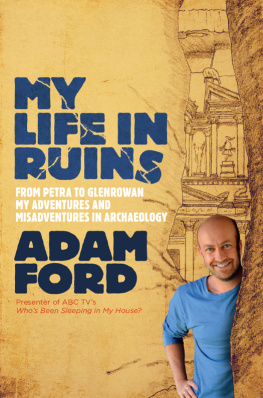
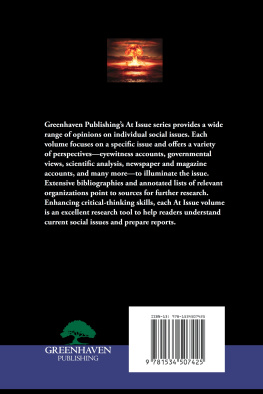
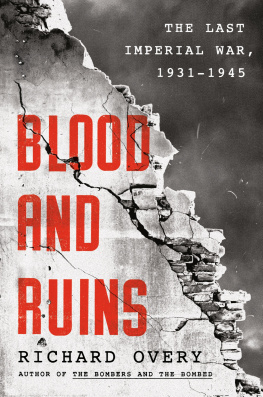
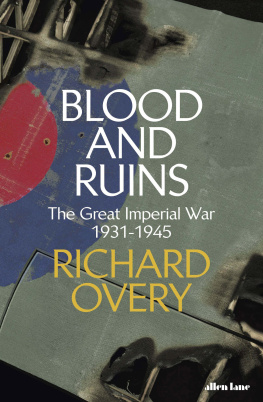
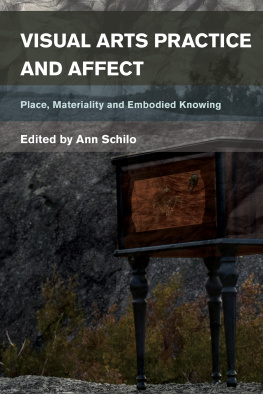
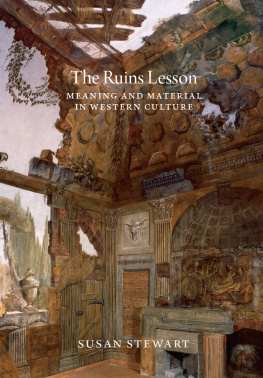
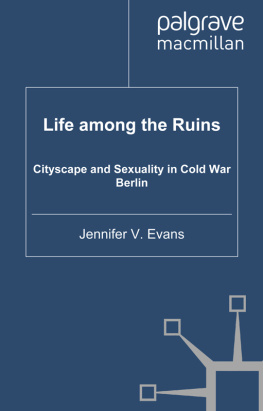

 The paper used in this publication meets the minimum requirements of American National Standard for Information Sciences Permanence of Paper for Printed Library Materials, ANSI/NISO Z39.481992.
The paper used in this publication meets the minimum requirements of American National Standard for Information Sciences Permanence of Paper for Printed Library Materials, ANSI/NISO Z39.481992.